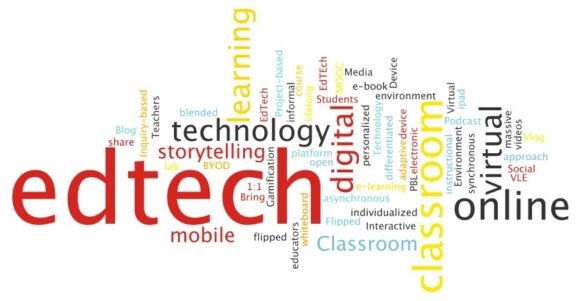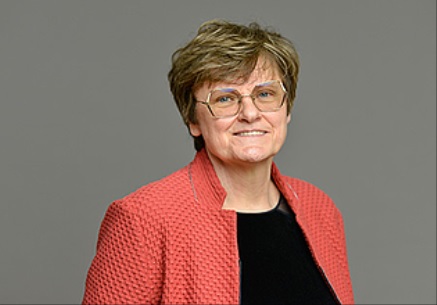 Dear Commons Community,
Dear Commons Community,
As soon as the federal pandemic relief started arriving at America’s schools, so did the relentless calls.
Tech companies by the dozens wanted a chance to prove their software was what schools needed. Best of all, they often added, it wouldn’t take a dime from district budgets: Schools could use their new federal money.
They did, and at a tremendous scale.
An Associated Press analysis of public records found many of the largest school systems spent tens of millions of dollars in pandemic money on software and services from tech companies, including licenses for apps, games and tutoring websites.
Schools, however, have little or no evidence the programs helped students. Some of the new software was rarely used.
The full scope of spending is unknown because the aid came with few reporting requirements. Congress gave schools a record $190 billion but didn’t require them to publicly report individual purchases.
The AP asked the nation’s 30 largest school districts for contracts funded by federal pandemic aid. About half provided records illuminating an array of software and technology, collectively called “edtech.” Others didn’t respond or demanded fees for producing the records totaling thousands of dollars.
Clark County schools in the Las Vegas area, for one, signed contracts worth at least $70 million over two years with 12 education technology consultants and companies. They include Achieve3000 (for a suite of learning apps), Age of Learning (for math and reading acceleration), Paper (for virtual tutoring) and Renaissance Learning (for learning apps Freckle and MyON).
The pandemic sparked a boom for tech companies as schools went online. Revenue skyrocketed and investors poured billions into startups.
At the same time, new marketing technology made it easier for companies to get school officials’ attention, said Chris Ryan, who left a career in edtech to help districts use technology effectively. Equipped with automated sales tools, marketers bombarded teachers and school leaders with calls, emails and targeted ads.
“It’s probably predatory, but at the same time, schools were looking for solutions, so the doors were open,” Ryan said.
At the school offices in rural Nekoosa, Wisconsin, the calls and emails made their way to business manager Lynn Knight.
“I understand that they have a job to do, but when money is available, it’s like a vampire smelling blood,” she said. “It’s unbelievable how many calls we got.”
The spending fed an industry in which research and evidence are scarce.
“That money went to a wide variety of products and services, but it was not distributed on the basis of merit or equity or evidence,” said Bart Epstein, founder and former CEO of EdTech Evidence Exchange, a nonprofit that helps schools make the most of their technology. “It was distributed almost entirely on the strength of marketing, branding and relationships.”
Many schools bought software to communicate with parents and teach students remotely. But some of the biggest contracts went to companies that promised to help kids catch up on learning.
Clark County schools spent more than $7 million on Achieve3000 apps. Some were widely used, such as literacy app Smarty Ants for young students.
Others were not. Less than half of elementary school students used Freckle, a math app that cost the district $2 million. When they did use it, sessions averaged less than five minutes.
The district declined an interview request.
Some Las Vegas parents say software shouldn’t be a priority in a district with issues including aging buildings and more than 1,100 teacher vacancies.
“What’s the point of having all this software in place when you don’t even have a teacher to teach the class? It doesn’t make sense,” said Lorena Rojas, who has two teens in the district.
Education technology accounts for a relatively small piece of pandemic spending. Tech contracts released by Clark County amount to about 6% of its $1.2 billion in federal relief money. But nearly all schools spent some money on technology.
As districts spend the last of their pandemic aid, there is no consensus on how well the investments paid off.
The company Edmentum says Clark County students who used one of its programs did better on standardized tests. But a study of a ThinkCERCA literacy program found it had no impact on scores.
A team of international researchers reported in September that edtech has generally failed to live up to its potential. With little regulation, companies have few incentives to prove their products work, according to the researchers at Harvard and universities in Norway and Germany.
The federal government has done little to intervene.
The Education Department urges schools to use technology with a proven track record and offers a rating system to assess a product’s evidence. The lowest tier is a relatively easy target: Companies must “demonstrate a rationale” for the product, with plans to study its effectiveness. Yet studies find the vast majority of popular products fail to hit even that mark.
“There has never been anything close to a proper accounting of what has been spent on or how it was deployed,” Epstein said. “You can call it mismanagement, you can call it a lack of oversight, you can call it a crisis. There was a lot of it.”
Epstein has called for more federal regulation.
“Some companies sold hundreds of thousands, even millions of dollars in products that they could see were barely ever being used,” the nonprofit CEO said.
In Louisville, Kentucky, education technology contracts totaled more than $30 million. The Jefferson County district signed contracts with online tutoring companies Paper and FEV for a combined $7.7 million. Millions more went to companies such as Edmentum and ThinkCERCA for software to supplement classroom teaching.
Jefferson County declined an interview request, saying most of the contracts were approved by officials who have left. Asked for records evaluating the use and effectiveness of the purchases, the district said it had none.
The district said it is using this year as “a fresh start.”
“We will be compiling baseline data and the new academic leadership team will be analyzing it to determine the impact these programs are having on student learning,” a district statement said.
In Maryland’s Prince George’s County, curriculum director Kia McDaniel spent hours sifting through pitches. Her team tried to focus on software backed by independent research, but for many products that doesn’t exist.
Often, she said, “we really did depend on the results that the sales team or the research team said that the product could deliver.”
Students made gains using some apps, but others didn’t catch on. The district paid $1.4 million for learning support from IXL Learning, but few students used it. Another contract for online tutoring also failed to generate student interest.
The district plans to pull back contracts that didn’t work and expand those that did.
Even before the pandemic, there was evidence that schools struggled to manage technology. A 2019 study by education technology company Glimpse K 12 found, on average, schools let 67% of their educational software licenses go unused.
Ryan, the former edtech marketer, said that at the end of the day, no technology can guarantee results.
“It’s like the Wild West, figuring this out,” he said. “And if you take a huge step back, what really works is direct instruction with a kid.”
Those of us who have been promoting the need for research on education technology know this story well. While many ed tech companies promote their software honestly, others do not. In 1994 and again in 2012, I wrote about the “predatory” nature of some in the ed tech industry. Unfortunately, it continues.
Tony












